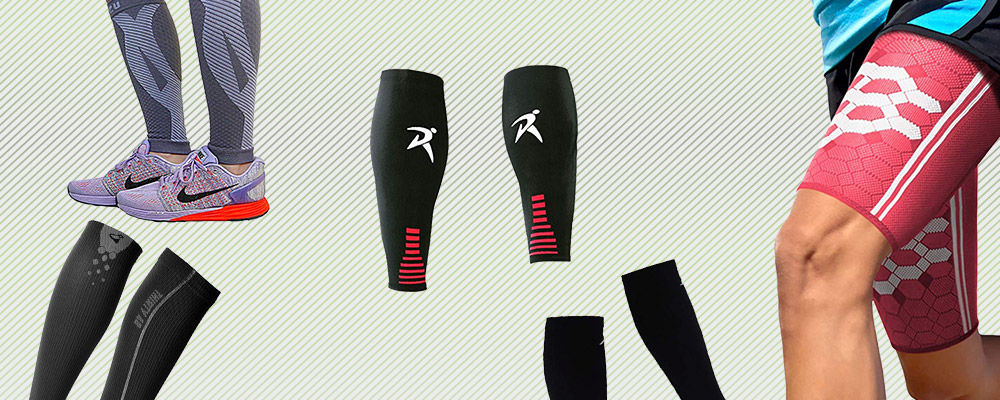Leg sleeves, also known as compression sleeves, have a bevy of benefits for athletes, both in performance and at rest. Leg sleeves may promote better blood circulation leading to more oxygen being transported to the muscles to help stave off soreness, cramping, swelling, and fatigue (1). If you have a prior history of leg injuries, consult your doctor for anything you should do specifically in regard to selecting a compression sleeve.
Leg sleeves vary in size, style, detailing, and design. With so much variety on the market, it can be difficult to choose which is right for you, so let’s see if we can narrow your search with our top picks.
Editor’s Pick:
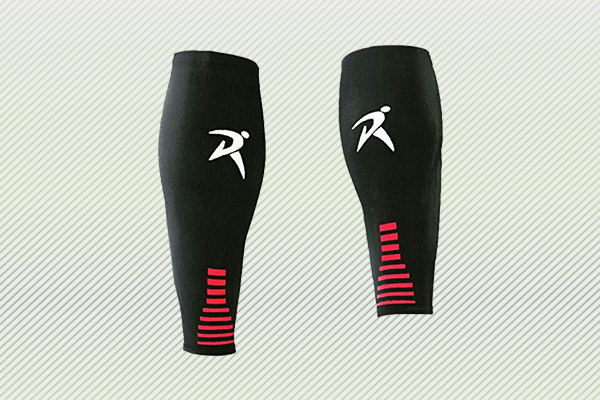
Rymora Calf Compression Sleeves
Pros:
- Implements graduated compression, meaning the amount of compression decreases up the leg, to further help circulation.
- The added compression support around the achilles is more unique than other options.
- The non-slip cuff may be more comfortable than other options.
Cons:
- The sleeves tend to run small, increasing the likelihood of the material tearing.
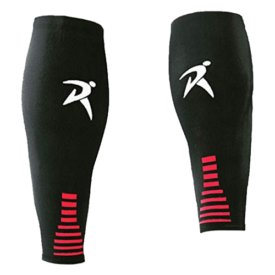
These breathable nylon, polyester, and elastane seamless sleeves come in four colors; black, pink, white, and fluorescent. Sold as a pair, they’re designed with a non-slip cuff and additional support for the achilles.
Contender
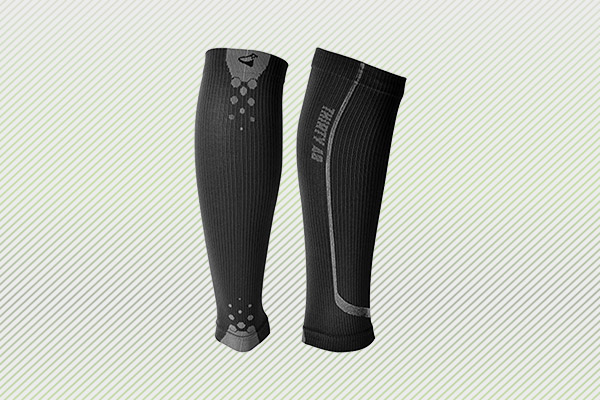
Graduated Calf Compression Sleeves by Thirty48
Pros:
- Moisture wicking seamless reinforced stitch further ensures durability.
- There is a range of compression levels offered from 15mmHg to 30mmHg.
- May help relieve calf cramps.
Cons:
- Might be more beneficial to handwash to avoid the sleeves shrinking in the wash.

Thirty 48 combines anti-bacterial nylon with a tear resistant spandex formula in their specialized compression sleeves for athletes. They incorporate easy airflow stitching and offer seven different color options.
Best Thigh Sleeve
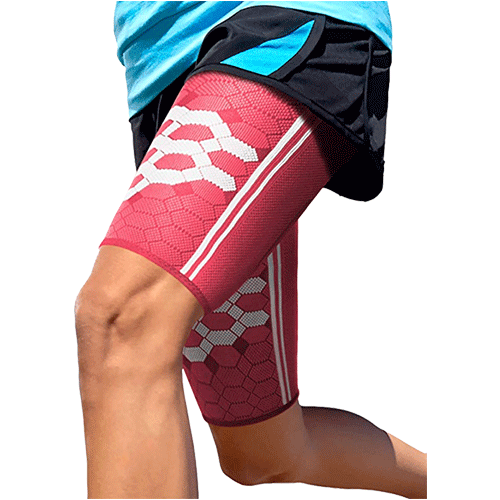
Sparthos Thigh Compression Sleeves
Pros:
- Silicone strips in the hem help keep the sleeve in place and prevent rolling.
- The sleeve also wicks away sweat.
- Machine washable.
Cons:
- There was a pattern in reviews of customers saying the sleeves run long.
- The silicone strips can pinch athletes with leg hair.
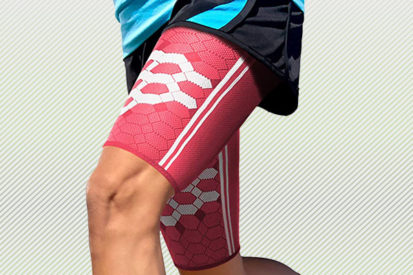
These compression sleeves that target the hamstrings, quads, and groin region are made of breathable yarn that aims for a skin-tight fit. Sold as a pair, there are four color options; blue, beige, pink, and black.
Best for Younger Athletes

BLITZU Calf Compression Sleeve
Pros:
- Vertical ribbing along the calf can help with stabilization.
- Twill design may further support the achilles.
Cons:
- Customers recommended hand washing to prevent the inner stitching from unraveling.
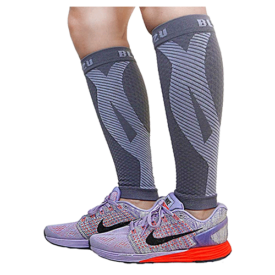
Blitzu offers a twill designed sleeve utilizing kinesiology for shock absorption to specifically target and prevent shin splints. There are eight different colors options.
Methodology
Length
Calf compression sleeves don’t have a standard length. Some sleeves go above the knee while others sit just below the kneecap. Some focus on covering the achilles while others focus more so on the calf. Unless a compression sleeve is labeled full-length, which more often than not covers the entire leg from the ankle to the groin, be sure to match the specific length of a sleeve to your comfort preference.
Material
Compression sleeves are made from a lot of different materials. Polyester, spandex, nylon, polypropylene, and yarn are a few of the most popular. Compression sleeves are made to have a snug fit and will usually be within a comparable mmHg range, so first and foremost, it is best to lean toward the fabrics that breathe and that you find comfortable. Aside from fabric preference, the environment and temperatures you intend to workout in should influence the type of material you choose. Polypropylene and polyester/cotton blends tend to do well in warmer weather, and nylon tends to do well in cooler weather.
Stitching or No Stitching
The different kinds of stitching that compression sleeves can have might be good to know, specifically at the hem. Due to compression sleeves being tight, if you have leg hair or sensitive skin, the material used in the hem to keep the sleeve in place could be a dealbreaker. For those with more sensitive skin, seek out sleeves that have wider tube or cuff like hems rather than thinner plastic strips.
Wrapping Up
If you spend a lot of time on your feet, a compression sleeve is a good investment. The improved circulation will serve to lower perceived exertion enabling speedier recovery (1).
References
- Gianesini S, et al. Lower limb volume in healthy individuals after walking with compression stockings. J Vasc Surg Venous Lymphat Disord. 2019 Jul;7(4):557-561
